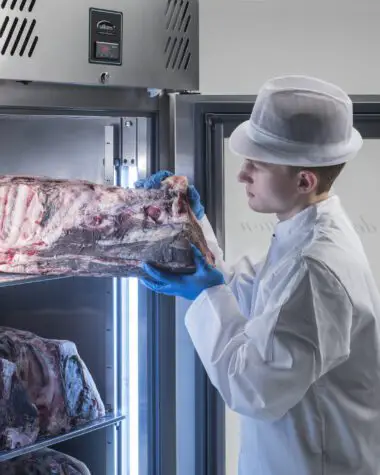You began loading your plates and utensils into the dishwasher, but later that evening, you discovered a puddle of water and a load full of filthy dishes. My friend, your dishwasher likely has a clog and isn’t draining properly.
Luckily, we’re here to help you. In this post, you’ll learn about the most common signs that your dishwasher isn’t working properly. We’ll also look at how to fix it yourself and when to seek professional help.
6 Telltale Signs That it is Clogged
| Sign | Reason |
| Gurgling noises can be heard | If your dishwasher is still unclean after the wash cycle, likely, it’s not filling up with water. |
| Dishes are dirty | Same as above |
| Dishwasher stinks | A clogged filter basket is most likely to blame if your dishwasher emits a foul stench. Your dishwasher filter stores food waste, which can create clogging and stink if not cleaned regularly. |
| Pool of water on the dishwasher | A puddle on your dishwasher may suggest that something is clogging your drainage system, causing your equipment to drain poorly. |
| The sink is filling with water | Dishwashers are typically connected to the drainage system. And if the dishwasher is running and water begins to flow into your sink, I hate to say it, but you have a problem with clogging. |
| The dishwasher is draining water slowly | If you notice pooling on your dishwasher or sink, there may be a partial obstruction on your sewer line that can cause costly problems. |
4 Reasons Why Your Dishwasher is Clogged
Dishwasher blockages can happen for a variety of reasons. That is why it is critical to identify the problem before trying to repair them. Here, we’ll go over the most common causes that might be contributing to your problem.
| Reason | Description |
| Your filter basket is clogged | A filter basket is specially designed to collect food waste from the dishwasher. However, if the filter basket is cleaned regularly, water can flow through easily. |
| Your drain pipe is clogged | Water flows through a hose to the drain pipe when a dishwasher flushes. However, there are times when food waste and soap residue build up on your pipe and produce a blockage. |
| Your new garbage disposal was not properly installed | A clogged dishwasher is most likely caused by an unremoved plastic plug from your newly connected garbage disposal. |
| Your sewage pipe has become clogged or damaged | Your sewage line is one of the main causes of your dishwasher’s poor dishwasher discharge. There is probably some obstruction or damage that might result in clogging. |
Other, Less Likely Reasons
If any of the abovementioned factors do not apply, your dishwasher probably has parts that must be cleaned or replaced.
Dishwasher Parts That Might Need to Be Replaced
- Water pump belt
- Valve flapper and belt
- Drain Solenoid
- Time that regulates the pump motor
5 Tips on How to Unclog It
After inspecting the dishwasher for defects, you can start mending it yourself. This will assist you in learning the appropriate procedures and the dishwasher parts to check.
Also, bring the following plumbing tools to assist you with the job:
- Gloves
- Bucket or towels
- Phillips head screwdriver
- Pliers
- Drain auger
1. Learn About Dishwashers
One of the most common causes of clogs is dishwasher misuse. People frequently need to properly dispose of food leftovers and cooking oil, which can harden and clog your pipes. Understanding what can and cannot be kept in the dishwasher can help you in avoiding difficulties in the first place.
Related Article: Common Mistakes You are Doing on Your Dishwasher (The Ugly Truth)
2. Clean the Dishwasher Drain
To avoid an accident during your DIY project, ensure your dishwasher is disconnected before cleaning it.
- Begin removing dish racks from your equipment to find the drain grate.
- Use a drain auger to clear the food scraps within the pipe.
- Flush a homemade baking soda and vinegar solution to ensure that all gunk is dissolved, then let it sit for 15 minutes.
- Reattach the grate and turn on your dishwasher’s rinse cycle on high to see if the problem has been solved.
3. Check the Dishwasher Filter Basket
If cleaning your drain does not cure the problem, look for your dishwasher’s filter.
- Remove the filter and any food scraps that you can find.
- Place your filter back and run a rinse cycle on high to see whether the problem has been rectified.
4. Clean the Sink’s Air Gap
If you don’t have a garbage disposal, check the air gap in your sink. Remove the sink gap and clean out any dirt with a bristle brush. Then start the dishwasher again.
5. Clean the Drain Hose
Suppose the suggestions mentioned above did not work. The issue might be with your drain pipes.
- Examine the hose for any bends that might prevent your dishwasher from emptying.
- If not, loosen the clamps on your pipe and flush the hot water to guarantee appropriate water flow. If there is an impediment, use a DIY mixture of baking soda and vinegar to clear it out.
- If there is an obstruction, use a DIY combination of baking soda and vinegar to clear it out. Reattach the drain pipes and ensure that they are properly sealed.
- Replacing your old pipes with new ones is also an alternative solution.
Bottomline
We hope that this information helps you identify your dishwasher and repair it. If the problem persists, it’s time to seek expert assistance.
Clogged drainage can become a nuisance and a health risk at your home if addressed after a period of time. While doing the plumbing yourself can save money, hiring a professional is a superior alternative.
To learn everything there is to know about everyone’s favorite kitchen partner-in-crime, click here to read the definitive dishwasher guide.










